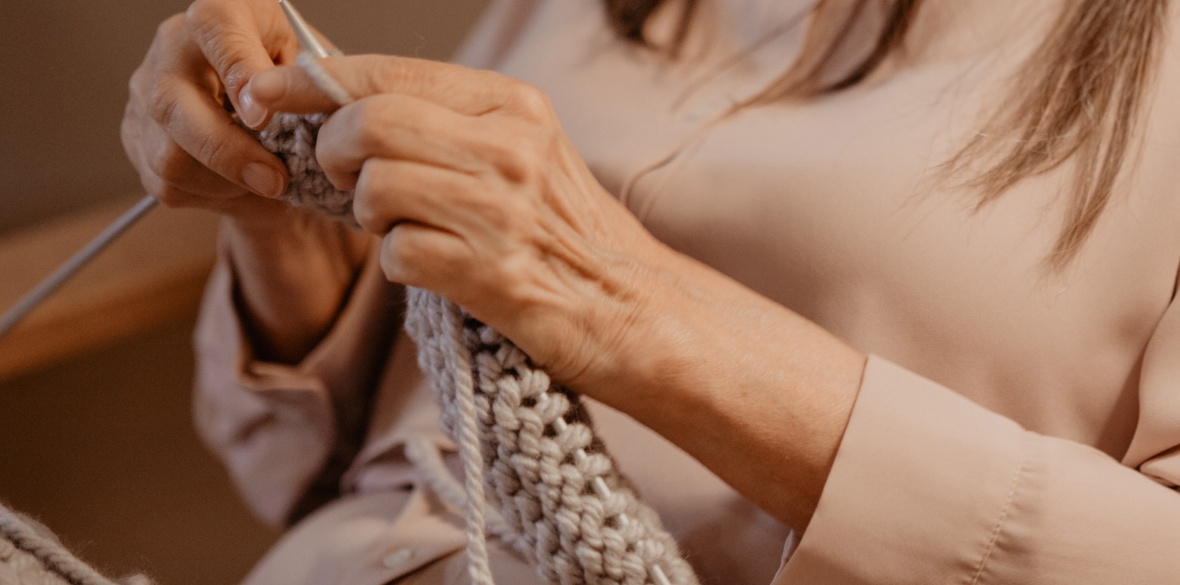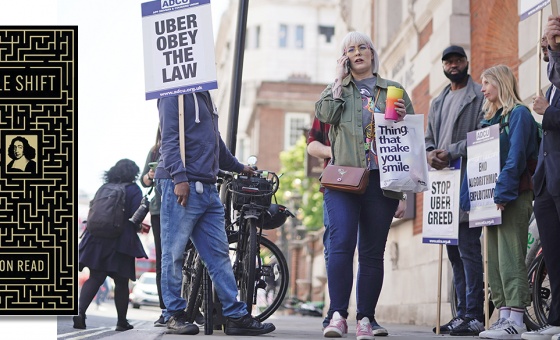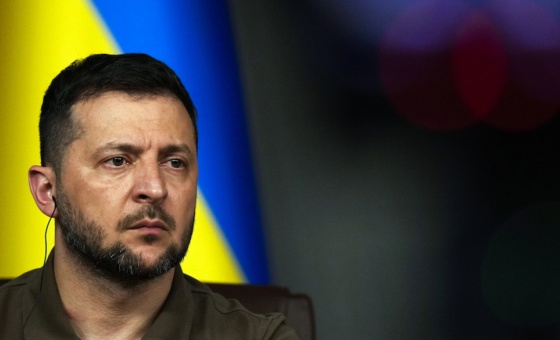This is the last article you can read this month
You can read more article this month
You can read more articles this month
Sorry your limit is up for this month
Reset on:
Please help support the Morning Star by subscribing here
MY GRANDMOTHER arrived in London from Riga in 1912 aged 24. Along with the samovar, the brass Friday night candlesticks and three young children, she brought her skills at sewing, embroidery, crochet and knitting. She taught my mother to knit, and my mother taught me.
When I was five, mum gave me short, plastic needles and a round ball of red wool. I learnt plain and purl, how to cast on and cast off, and how to pick up dropped stitches.
I loved the feel of the yarn, the rhythm of the movements, the sound of the needles, and the way you could talk and listen while your hands were being creative and productive.
At school I learnt that knitting was for girls (my father couldn’t knit but he couldn’t change a plug either). At St Mary’s CofE Primary in the 1950s, the girls learnt sewing and knitting while the boys did woodwork.
Just as luminous nylon socks became our most coveted fashion item, we had to make handknitted socks in thin white wool.
I was taught how to turn the heel and decrease for the toe, and I produced a very odd pair of socks in various shades of grey.
A great deal has been written about how needlecrafts have signified femininity and been a means of transmitting appropriately feminine qualities — modesty, delicacy, serenity, domesticity — from generation to generation.
But these decorative skills for nimble fingers have also been a vehicle for radicalism, as Roszika Parker described in her seminal 1984 book, The Subversive Stitch.
Most familiar to us are the wonderful banners, patchwork quilts and embroidered samplers, through which women have expressed dissident ideas.
A recent theory about the Bayeux Tapestry, derived from the images around the margins of the official telling of the Norman Conquest, is that it was stitched not by Norman women but by Saxon women, the most unrepresented of the conquered population.
Knitting, though, epitomises industriousness and domesticity; it can be easily put down and picked up again between other tasks so women’s hands are never idle, their time never “wasted.”
It is a symbol of genteel respectability, which is why the tricoteuses — the women who sat by the guillotine and knitted during the Reign of Terror following the French Revolution — remain a much more shocking image than the crowds that down the ages have routinely turned out to be entertained by executions.
That disturbing juxtaposition of respectability and activism was used just as powerfully but for better ends by Sojourner Truth.
Born into slavery at the very end of the 18th century, sold and separated from her family at the age of 11, she declared herself free in 1826.
She spent the rest of her life lecturing and campaigning against slavery, for women’s suffrage and for rights for African-Americans, and is best known for her “Ain’t I a woman?” speech.
To support herself in this work, in 1864, she had calling cards made featuring a photograph of herself, sitting and knitting, which she sold at her meetings and by mail order.
I’ve never been particularly taken with the idea of respectability, and my knitting has not been confined to the domestic sphere.
It’s only recently, though, that I’ve started to understand that men’s annoyance at seeing women knitting through meetings might be a feminist issue.
I’ve been told off for distracting people, for not concentrating or taking the proceedings seriously enough. I’ve been told countless times by men exhibiting their wit and historical knowledge that I look like one of the tricoteuses at the guillotine.
Rather than sticking a knitting needle between their ribs, I have graciously moved on and have found a fully fledged, global community of radical knitters with factions, debates and even splits.
The best-known knitting community is Ravelry, which has millions of members who share patterns, skills, advice and information.
It has been described as the Google of knitting and is hugely successful. But there was uproar when a Los Angeles knitting shop created the Pussy Hat pattern for people to knit and wear at the 2017 worldwide Women’s March in protest at the election of Donald Trump.
One user described it as “embarrassing and degrading.” Another said it was an “incredibly ugly hat with a vulgar name.”
The row was so bad that Ravelry went on to ban all discussion of Donald Trump on the site.
During lockdown, and following the publicity given to Bernie Sanders’s mittens, made for him by a Vermont teacher (which were sewn rather than knitted), I have learnt a lot about northern and east European knitting traditions.
In the process, I have discovered a side of social media, dominated by women, that bears no resemblance to the angry, hypersensitive and often frightening place that Facebook and Twitter have become.
Instead, people are generous, encouraging and helpful. Their practical skills and creativity are a vehicle for their activism.
Just one example is the women-only Ladies Knitting Circle and Resistance League, set up when Trump was first elected, where contributions range from discussion about the right to choose and equal access to the ballot box, to patterns for hats for people having chemotherapy and suggestions about what to knit for the Ukrainians.
But knitting for political ends has a long pedigree, and knitting socks for soldiers didn’t necessarily mean supporting imperialist wars.
On December 12 1936 the Daily Worker featured a photo of women sitting in the Communist Party’s People’s Bookshop in Lavender Hill knitting woollen items to be sent as aid to Spain during the civil war.
My foray into new knitting realms has taught me about the lives of women from the northernmost parts of the world who, for generations, have created traditional Norwegian, Fair Isle and Saami knitting patterns.
One of the books that has most inspired me is called Knit Like a Latvian. And that, if you can hear me, Grandma, is what I am doing.











